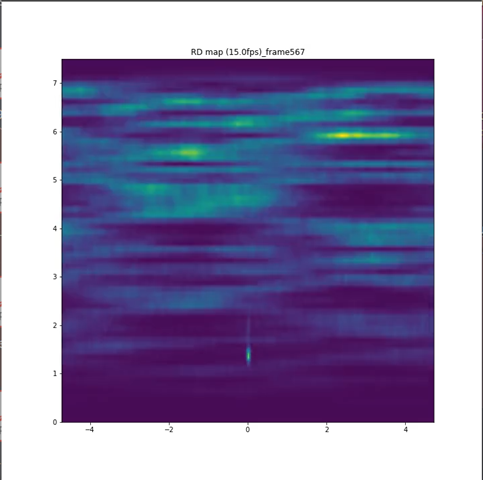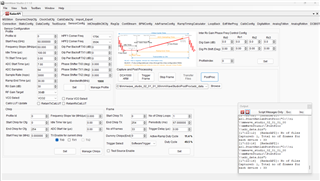Other Parts Discussed in Thread: DCA1000EVM
Tool/software:
Dear colleagues,
In "Interference Management in Radar Systems":
We can read that "Dithering the phase of each chirp"
"Extremely Useful. Especially in a parallel interferer scenario."
I have IWR6843ISK-ODS. I want to use two or more devices in one room with the same radar configuration.
So I face with parallel interference (the same bandwith, frequency slope for agressor and victim radars).
I see the interference like a moving peak across range from chirp to chirp in affected radar frame.
Let us consider an example. I use two pairs of IWR6843ISK-ODS + DCA1000EVM. One is victim another one - agressor.
I use 255 chirps per frame, I set two unique pseudo random sequences for phase shifters of aggressor and victim. The phase of chirps in a frame is 0 or 180 degrees.
If we look at the interference in picture with coordinates "range profile bins vs number of chirp", we see the behavior of interference (64 samples per chirp, 255 chirps per frame):

Here you can see the strong declined line corresponded to interference and weak horizontal line corresponded to standing human.
When I calculate Range-Doppler map after per chirp phase correction to compensate the transmitter's phase shifting I get a picture (vertical line is a range in meters, horizontal line - velocity):

Here you can see the point on 0 velocity and 1.3 m range which is corresponded to standing human.
As you can see there is no suppression of interference.
Could you advice, should phase dithering be effective in my case?
Best regards,
Grigor Mardiyan



